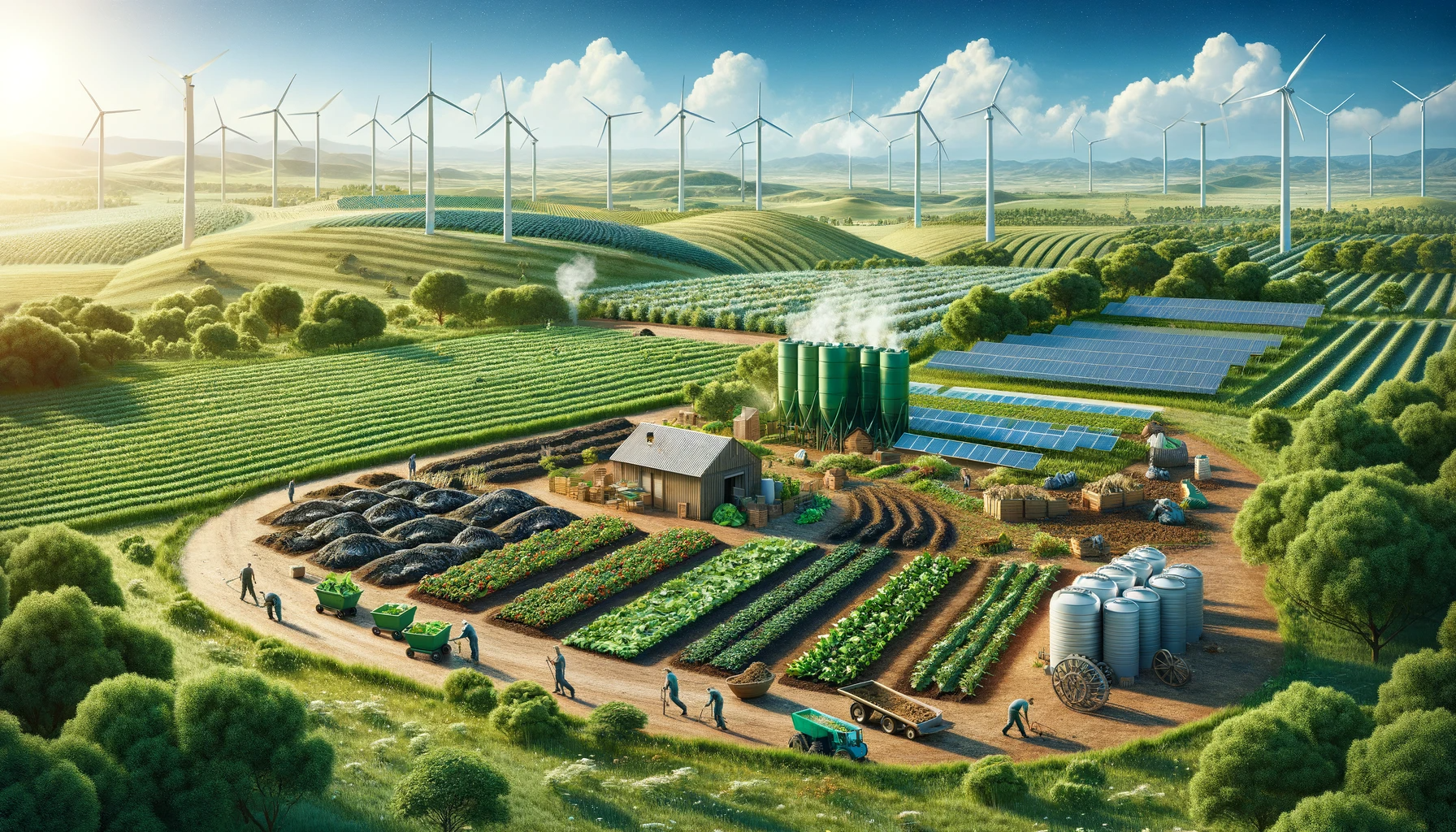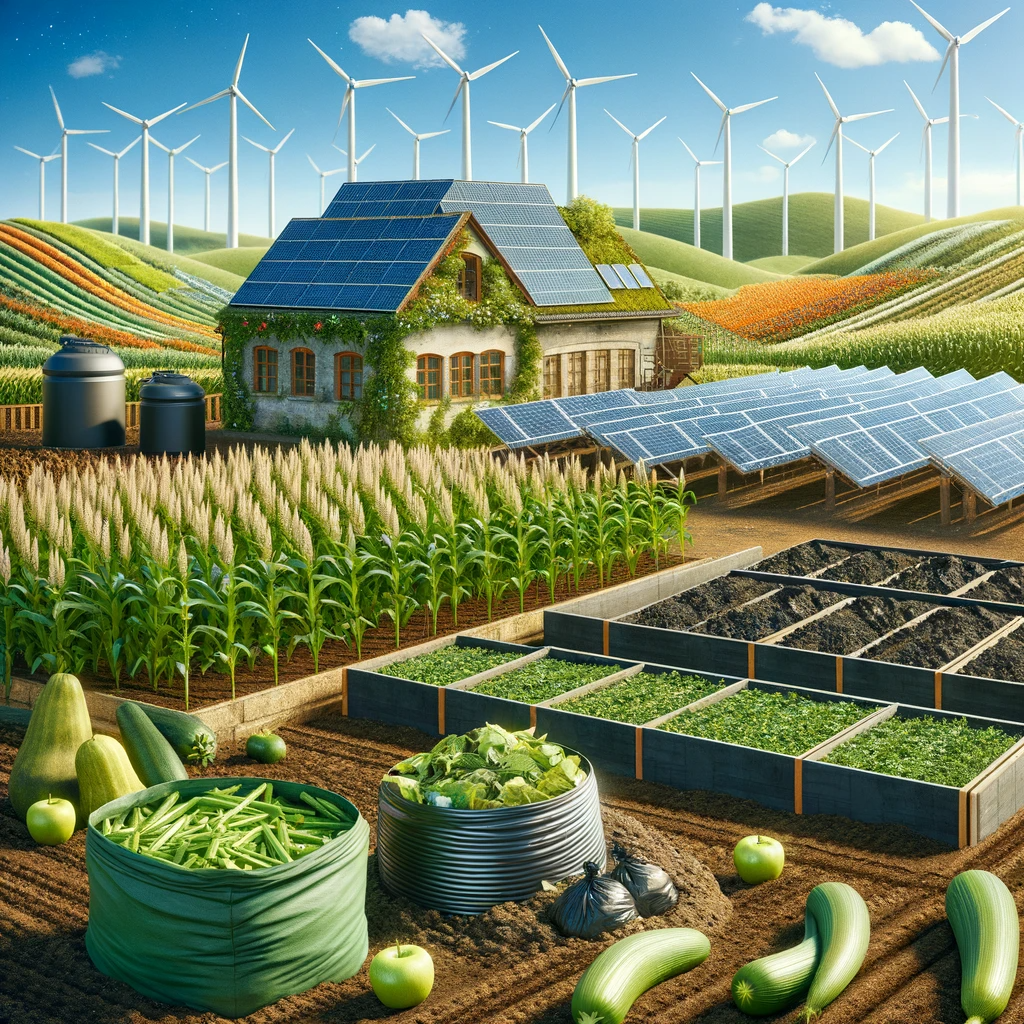In the realm of modern agriculture, the concept of a circular economy is rapidly gaining traction, promising a pathway to sustainability that is both innovative and necessary. As the world grapples with the dual challenges of feeding a growing population and preserving our environment, the agricultural sector stands at the forefront of this battle. The adoption of circular economy principles in agriculture is not just a trend; it’s a revolution in how we think about and manage agricultural waste and resources.
Understanding the Circular Economy in Agriculture
At its core, a circular economy is about rethinking and redesigning the way we produce and consume goods. It’s a departure from the traditional linear model of ‘take-make-dispose’ to a more sustainable approach that focuses on minimizing waste, optimizing resource use, and creating value from by-products.
In agriculture, this means developing systems where nothing goes to waste. Every output, whether it’s crop residue, animal manure, or food processing by-products, is viewed as a valuable input for another process.
Strategies for Waste Reduction and Resource Optimization
1. Composting and Organic Fertilizers: One of the most straightforward methods of waste reduction in agriculture is through composting. Organic waste such as crop residues and animal manure can be transformed into nutrient-rich compost, reducing the need for chemical fertilizers and enhancing soil health.
2. Integrated Farming Systems: These systems combine crops, livestock, and sometimes aquaculture to create a synergistic farming environment. Waste from one component, like manure from livestock, can be used to support another, such as fertilizing crops, creating a closed-loop system.
3. Agroforestry and Permaculture: By integrating trees and shrubs into agricultural land, farmers can improve biodiversity, enhance soil health, and reduce erosion. Permaculture designs go a step further, creating self-sustaining ecosystems that mimic natural processes.
4. Biogas Production: Anaerobic digestion of agricultural waste can produce biogas, a renewable energy source. This not only provides farmers with a clean energy option but also reduces methane emissions from decomposing waste.
5. Upcycling Food Waste: Startups and businesses are increasingly finding innovative ways to upcycle food waste. From creating bio-packaging materials to producing edible products from discarded fruits and vegetables, these initiatives are turning waste into valuable resources.
The Benefits: Beyond Waste Reduction
The benefits of embracing a circular economy in agriculture extend far beyond waste reduction. It leads to improved soil health, reduced reliance on chemical inputs, lower greenhouse gas emissions, and increased biodiversity. Moreover, it can enhance the resilience of farming systems against climate change and market fluctuations.
Challenges and the Way Forward
Adopting a circular economy in agriculture is not without its challenges. It requires a shift in mindset, significant investment in new technologies, and often, a change in farming practices. Policymakers, industry leaders, and farmers must collaborate to create supportive policies, invest in research and development, and foster education and training for farmers.
Conclusion
As we look towards a more sustainable future, the principles of a circular economy in agriculture offer a beacon of hope. By reimagining waste as a resource and optimizing the use of all inputs, agriculture can not only sustain itself but also contribute positively to the health of our planet. The journey towards a circular agricultural economy is complex and challenging, but the rewards – a sustainable, resilient, and productive food system – are undoubtedly worth the effort.


